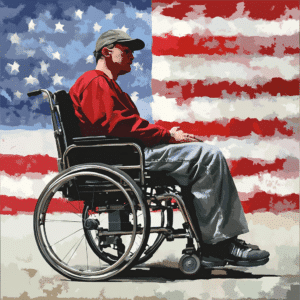Recognizing the Importance of Building Resilience
Building resilience is crucial for parents grappling with the challenges of a child’s addiction or coping with the devastating loss of a child to addiction. As parents, it’s overwhelming to watch your child struggle, and the weight of helplessness can be immense. But understanding that resilience isn’t just about bouncing back—it’s about adapting and growing stronger—can be life-changing. Resilience empowers you to face life’s toughest moments with strength and hope.
Understanding the Science Behind Resilience
Resilience isn’t an inherited trait; it’s built through experiences and deliberate practices. The American Psychological Association tells us it involves learning behaviors, thoughts, and actions that can be developed in anyone. This radiates hope: no matter how tough things get, you can cultivate resilience to handle whatever life throws your way. Even more promising, practices that build resilience positively affect both psychological and physiological responses to stress.
| Category | Description | Key Components |
| Core Elements of Resilience | Resilience involves the capacity to adapt and bounce back from adversity while maintaining mental, physical, and emotional well-being. | Community, Compassion, Confidence, Commitment, Centering |
| The 7 Cs of Resilience | Investing in these seven key areas helps build a robust support system that can aid in overcoming tough circumstances. | – Competence: Having the necessary skills and abilities to face challenges. – Confidence: Belief in one’s abilities. – Connection: Strong relationships and support networks. – Character: Integrity and moral compass. – Contribution: Adding value to others. – Coping: Effective problem-solving and stress management. – Control: Belief in having an influence over one’s environment and outcomes. |
| Adapting to Tough Times | Being able to face and work through difficult situations while still experiencing emotions like anger, grief, and pain. | – Acknowledge emotions – Maintain physical and mental health – Seek support from others |
| Maintaining Physical Health | Physical health plays a crucial role in managing stress and building resilience. | – Sleep: Get sufficient and restful sleep. – Physical Activity: Stay active consistently. – Diet: Eat a balanced and nutritious diet. |
| Benefits of Building Resilience | Developing resilience provides various benefits, including better stress management, emotional stability, and overall life satisfaction. | – Enhanced ability to manage adversity – Improved mental and physical health – Stronger relationships and support networks |
| Implementation Strategies | Practical steps to actively build and enhance resilience in daily life. | – Regular exercise and proper diet – Developing strong social connections – Engaging in mindfulness or centering practices – Learning effective coping mechanisms – Setting realistic and achievable goals |
Strategy #1: Fostering a Support Network
One of the most powerful ways to build resilience is through fostering a strong support network. According to Harvard Medical School, individuals with healthy social connections are 50% more resilient. It’s not just about having these connections but about maintaining and valuing them. Utilize support groups and forums like Al-Anon, where families share experiences and support each other. Remember, you’re not alone in this journey—lean on those who understand your plight.
Strategy #2: Embracing Mindfulness and Self-Care
Mindfulness and self-care are indispensable components of resilience. Research published in the Journal of Clinical Psychology shows that regular mindfulness meditation can enhance grey matter concentration in the brain, improving emotional response and focus. Apps like Headspace and Calm provide guided meditations that might just be the daily reset button you need. When you prioritize self-care, you nurture your resilience, giving yourself the strength to handle whatever comes your way.
Strategy #3: Engaging in Cognitive Behavioral Techniques
Cognitive Behavioral Therapy (CBT) is another effective strategy for building resilience. The National Institute of Mental Health states that CBT can significantly reduce symptoms of anxiety and depression, paving the way for a more resilient mindset. Services like BetterHelp make CBT accessible from your home, connecting you with licensed therapists who can help reshape negative thought patterns. CBT enables you to see life’s challenges in a new light, empowering you to deal with stress and setbacks more effectively.
Strategy #4: Cultivating Optimism
Cultivating optimism doesn’t mean ignoring difficulties—it’s about viewing challenges as opportunities. The Mayo Clinic’s studies reveal that optimistic people manage stress better. Books like Martin Seligman’s “Authentic Happiness” can guide you towards an optimistic outlook. This resilience will help you see possibilities where others see obstacles. Engage with literature that promotes positive thinking and actionable strategies to foster an optimistic view of life.
Strategy #5: Prioritizing Physical Health
Never underestimate the connection between physical health and resilience. Regular physical activity does wonders for mental health by releasing endorphins and reducing stress. The CDC recommends at least 30 minutes of moderate exercise most days. Joining a community sports team, a gym, or even taking regular walks can significantly fortify your resilience. Additionally, ensuring good sleep, proper nutrition, and active living are foundational steps to managing stress.
Strategy #6: Seeking Professional Help and Therapy
Professional help and therapy can be pivotal in building resilience. According to Psychology Today, therapy for trauma-related issues often increases resilience. Facilities like the Betty Ford Center provide comprehensive support that extends to family members. They offer various therapy Modalities that focus on healing and building a resilient future beyond addiction. Seeking professional help provides the tools and strategies necessary to confront adversity head-on.
Strategy #7: Encouraging a Growth Mindset
Promoting a growth mindset can be one of the most transformative resilience-building strategies. Stanford psychologist Carol Dweck describes how believing in the malleability of one’s abilities fosters resilience. Encouraging both yourself and your children to view challenges as learning opportunities rather than insurmountable obstacles can create a profound shift. Educational resources such as Khan Academy integrate growth mindset principles, offering practical ways to implement this approach in daily life.
Embracing a Resilient Future
Building resilience is a deeply personal journey that can significantly impact how we face life’s challenges, particularly for parents grappling with the harsh realities of children’s addiction or loss. Incorporating these strategies can transform adversity into a powerful source of strength. By fostering a supportive network, prioritizing self-care, embracing optimism, and seeking professional help, you can build a resilient foundation for the future. Remember, resilience isn’t about facing challenges alone; it’s about the power in community and tackling hardships with renewed strength and hope.
Final Thoughts
For those navigating through such turbulent times, remember the importance of commemorating the lives of those we’ve lost. Participating in events like our candle lighting can provide solace and a sense of community. Also, giving attention to articles and resources about coping With loneliness in recovery can provide additional strategies and support.
You are not alone in this journey. Resources are available, and with each passing day, you’re building resilience, equipping yourself with the strengths to not just survive but thrive. We at MothersAgainstAddiction.org stand with you, offering support, compassion, and the tools needed to foster resilience in the face of addiction and loss.
Building Resilience
Building resilience is a journey filled with little-known facts and engaging trivia that can spice up your understanding of this crucial topic. Here are some delightful tidbits to fuel your resilience-building strategy.
Mind-Body Connection
Did you know that the mind-body connection plays a pivotal role in building resilience? Studies have shown that practices such as meditation and yoga not only reduce stress but also significantly enhance one’s ability to bounce back from adversity. This link between mental and physical practices is not just about feeling good; it’s about forging a deeper resilience that sustains long-term wellbeing. Karl Clemente emphasizes the significance of this connection, shedding light on how holistic practices can transform lives.
Financial Resilience
Ever thought about how your financial decisions impact your resilience? For instance, mortgage Refinances can provide more than just lower interest rates. They can also offer financial stability, reducing stress and freeing up resources for unexpected challenges. This financial foresight is a cornerstone of resilient living, enabling individuals and families to navigate life’s financial ups and downs with greater confidence.
Community and Social Support
Building resilience isn’t just an internal process; it’s also about the support systems we create. Community events, like those hosted at places such as the Turf Valley resort, bring people together, creating bonds that can support individuals through tough times. These social connections are a fundamental part of resilient living, providing a network of support that’s invaluable in times of need.
Housing Market Stability
Interestingly, there’s a correlation between housing market stability and personal resilience. For example, understanding America home loan rates can aid in making informed choices about homeownership, thereby contributing to one’s long-term financial stability and resilience. Educated decisions about where and how you live can buffer against future financial shocks, adding an extra layer to your resilience toolkit.
The journey to building resilience is multifaceted, drawing on various aspects of life from mental health to financial stability and social connections. By exploring these trivia points, you can begin to see how resilience is interwoven with many parts of everyday life, turning the complex process of bouncing back into a more approachable and achievable goal.
What are the 7 C’s to build resilience?
The seven Cs of building resilience are competence, confidence, connection, character, contribution, coping, and control. If you start investing a bit in each of these areas over time, you’ll be better equipped to handle tough situations and build your resilience as a leader.
What does building resilience mean?
Building resilience means being able to cope with tough events. When something bad happens, you still feel anger, grief, and pain, but you keep going both physically and psychologically. It’s not about just putting up with something tough or coping on your own.
How can we build resilience?
You can build resilience by investing in your competence, confidence, connection, character, contribution, coping, and control. Focus on improving a bit in each area, and over time, you’ll create a support network that helps you through tough times.
What are the 5 C’s of resilience?
The five Cs of resilience are community, compassion, confidence, commitment, and centering. Working on these aspects can help you strengthen your ability to bounce back from challenges.
What are the 5 pillars of resilience?
The five pillars of resilience are community, compassion, confidence, commitment, and centering. These elements together support your ability to handle tough situations and recover from setbacks.
What are 7 C’s of resilience?
The seven Cs of resilience include competence, confidence, connection, character, contribution, coping, and control. These areas are crucial to focus on to build a solid foundation for handling life’s challenges.
What causes lack of resilience?
Lack of resilience can be caused by factors like low self-esteem, lack of supportive relationships, high levels of stress, and poor physical health. Addressing these areas can help improve resilience.
What are 10 ways a person can build resilience?
Ten ways to build resilience include staying connected with loved ones, taking care of your body, finding purpose, practicing mindfulness, setting goals, keeping a positive outlook, learning from experiences, being proactive, seeking help when needed, and taking breaks to recharge.
How to be resilient in tough times?
Being resilient in tough times means acknowledging your emotions like anger, grief, and pain but still pushing forward both physically and mentally. It involves relying on your support systems and using healthy coping strategies.
What is a famous quote about resilience?
A famous quote about resilience is from Winston Churchill: “Success is not final, failure is not fatal: It is the courage to continue that counts.” This quote highlights the importance of perseverance and courage.
How to be emotionally resilient?
To be emotionally resilient, focus on managing your stress, fostering a support network, staying positive, and being proactive in dealing with problems. This helps you navigate emotional challenges effectively.
Is resilience a skill or quality?
Resilience is often considered both a skill and a quality. It involves learned behaviors and coping strategies while also being a personal trait that varies in strength from person to person.
What are the 4 Ps of resilience?
The four Ps of resilience are perspective, purpose, perseverance, and partnership. These elements help you maintain strength and balance during challenging times.
What are the 3 P’s of resilience?
The three Ps of resilience are personal strength, positivity, and perseverance. These core areas help build your ability to bounce back from adversity.
What are the 7 keys to resilience?
The seven keys to resilience are competence, confidence, connection, character, contribution, coping, and control. These aspects provide a strong framework for building personal resilience.
What are the 7 keys to resilience?
The seven pillars of resilience include community, compassion, confidence, commitment, centering, connection, and coping. These areas work together to create a robust support system.
What are the 7 pillars of resilience?
The seven techniques of resilience involve building competence, confidence, connection, character, contribution, coping strategies, and control. Implementing these techniques can help you effectively manage stress and bounce back from challenges.
What are the 7 techniques of resilience?
The seven principles of resilience thinking are adaptability, diversity, systems thinking, tight feedback loops, understanding the human-nature connection, building redundancy, and fostering learning. These principles help create flexible and sustainable development strategies.




























 Welcome to Mothers Against Addiction (MAA) AI Support Chat!
Welcome to Mothers Against Addiction (MAA) AI Support Chat!